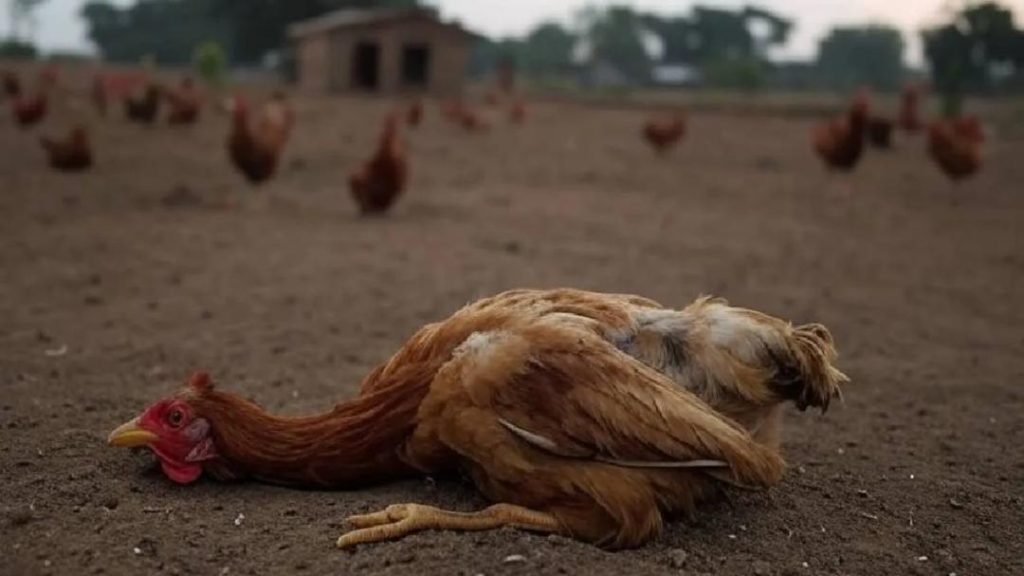
Title: Tigers, Leopards, and Even Pet Cats Infected by H5N1 Virus
The bird flu crisis in India has taken a concerning turn, with the recent death of a child in Andhra Pradesh suspected to be linked to the highly pathogenic H5N1 virus. The outbreak has spread to multiple states, and alarmingly, the virus is now infecting non-poultry species, including tigers, leopards, and even pet cats. This zoonotic threat has raised significant concerns, and a high-level meeting chaired by DAHD Secretary Alka Upadhyaya on April 4 focused on addressing the growing crisis and planning urgent containment measures.
The H5N1 virus, also known as bird flu, is a highly contagious and deadly disease that primarily affects birds. However, the virus can also infect humans, particularly those who have close contact with infected birds or contaminated environments. The virus is transmitted through respiratory droplets, contact with contaminated surfaces, and direct contact with infected animals.
In India, the first reported case of H5N1 infection in humans was in 2006. Since then, there have been sporadic cases, mostly linked to poultry exposure. However, the recent outbreak has seen a significant increase in cases, with multiple states reporting infections. The Andhra Pradesh case, which resulted in the child’s death, is particularly concerning, as it marks the first human fatality in the country linked to the virus.
The most alarming aspect of the outbreak is the spread of the virus to non-poultry species. In recent weeks, cases of H5N1 infection have been reported in tigers, leopards, and even pet cats in various parts of the country. This raises concerns about the potential for the virus to spread further, potentially between different species and even to humans.
Tigers and leopards are apex predators that roam freely in the wild, and their infection with H5N1 poses a significant threat to the country’s wildlife and ecosystem. The virus can potentially spread through the food chain, infecting other animals that come into contact with infected prey or contaminated environments. This could have devastating consequences for India’s rich biodiversity and wildlife conservation efforts.
The infection of pet cats is also a cause for concern, as it highlights the potential for the virus to spread to domestic animals and potentially even to humans. Pet cats that come into contact with infected birds or contaminated environments may carry the virus, potentially transmitting it to their owners or other animals.
The recent high-level meeting chaired by DAHD Secretary Alka Upadhyaya brought together experts from various fields, including animal husbandry, wildlife conservation, and public health. The meeting focused on addressing the growing zoonotic threat posed by the H5N1 virus and planning urgent containment measures.
Some of the key decisions taken during the meeting include:
- Enhancing surveillance and monitoring of bird populations and wildlife to detect early signs of infection
- Implementing stricter biosecurity measures in poultry farms and other animal breeding facilities to prevent the spread of the virus
- Conducting rapid diagnostic tests to detect H5N1 infection in animals and humans
- Providing training and guidance to veterinarians and healthcare professionals on the diagnosis and management of H5N1 infection
- Developing a comprehensive plan for the containment and control of the outbreak
The meeting also emphasized the need for public awareness and education on the risks associated with the H5N1 virus. It highlighted the importance of taking preventive measures, such as avoiding contact with infected birds or contaminated environments, and reporting any suspected cases of H5N1 infection to the authorities.
In conclusion, the bird flu crisis in India has escalated to alarming levels, with the virus infecting non-poultry species, including tigers, leopards, and even pet cats. The situation requires urgent attention and containment measures to prevent further spread of the virus. The recent high-level meeting has taken important steps towards addressing the crisis, but it is crucial that public awareness and education campaigns are implemented to prevent the spread of the virus and protect human and animal health.
News Source:
https://thesouthfirst.com/health/bird-flu-in-india-tigers-leopards-and-even-pet-cats-infected-by-h5n1-virus/






